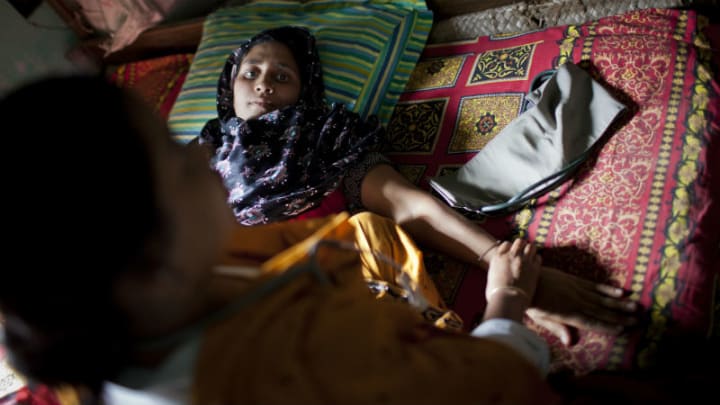
In 2010, Bangladesh achieved something remarkable; much to the confusion of many, the number of women dying during labor dropped dramatically from 650 in 100,000 live births in the 70s to only 194 — a 70 percent reduction. This is a dramatic decline that was termed by observers as “one of the great mysteries of global health.”
It is a mystery still then, why this decline stalled.
The recent 2016 Bangladesh Maternal Mortality and Health Care Survey, showed no improvement since the 2010 survey. As a country wholly committed to improving the well-being and health of our population, I can say personally, that these results are extremely frustrating. This is especially in light of the country’s commitment to meet the Sustainable Development Goals by 2030.
SDG indicators shape maternal health interventions. Is it for the best?
Efforts to reduce maternal mortality in places such as Afghanistan have focused on ensuring a skilled birth attendant is present for each live birth. Experts now fear that emphasis could be sidelining other key objectives — and perhaps even derailing progress.
If we are to build upon our successes before 2010, we need to understand what worked in the first place? The Bangladesh Liberation War — that saw the birth of Bangladesh — created a new impetus to create a fairer society for everyone. It set in motion a different mindset for our community. By 2010 only a quarter of births were delivered in hospitals, while just nearly a third of the deliveries were administered by skilled health workers. Not what many would consider the setting for a decline in maternal mortality, as we were seeing.
There are three factors that have played a significant role in ensuring the safety and health of mothers giving birth: Increased public sector investments in establishing emergency obstetric care facilities across and within districts, which brought emergency services closer to the people; private sector investment in setting up clinics and hospitals in cities and other urban settlements that supplemented public facilities and thereby increased access; and efforts by public and not-for-profit organisations to address the social and structural factors that contribute to the health and well-being of women — for example, the increased access to excellent roads and boats meant that women could reach a facility much more quickly.
As part of efforts to improve the health picture of the country, great work was being done to improve women’s empowerment, and in turn access to quality health care. Family planning to some extent has been fundamental in achieving this change. Birthrates have dropped dramatically since the ‘70s from women having six children to two. This is significant, as many of those births that were prevented by family planning measures included high-risk ones, thereby contributing to saving women’s lives.
But why has this stalled now?
Despite the fact that in the past eight years there are nearly double the number of health facilities to support mothers the picture has not changed since 2010. Akin to the global experience, Bangladesh is no exception in the paradox where expanded facility deliveries have not lead to a reduction in maternal mortality. The critical element here is the quality and access of the services provided.
An analysis of the causes of maternal deaths in 2010 and 2016 suggest that over 80 percent of deaths were preventable. More than half of the deaths were caused by hemorrhage and eclampsia, most of which could have been prevented through the administration of simple and inexpensive measures.
Unfortunately, these interventions were not available to the vast majority of mothers. Sadly, only a third of health facilities had basic emergency obstetric services and even fewer of these had doctors available all day.
The necessary medicines to treat hemorrhage and eclampsia were only available in less than half of the health facilities. I am sad to say that the list of inadequacies goes on.
We have stagnated and we need to move forward. The social changes in Bangladeshi society between 1971 and 2010 are momentous and have brought us a long way, but the challenge is now. If we are to achieve the SDG target of only 70 deaths per 100,000 live births by 2030 we need to take substantive and definitive action. The Bangladeshi government needs to commit to improving our health system through its governance and service delivery. Until then this SDG target will simply remain a dream.
In October, I will be participating in the 5th Global Symposium for Health Systems Research to explore how we can do this. What I do know, is that it is all very well building hospitals, but if you do not have the staff to care for women or the medicines to treat very treatable causes of death, countless facilities are meaningless.
This op-ed is part of a media partnership with Health Systems Global.





